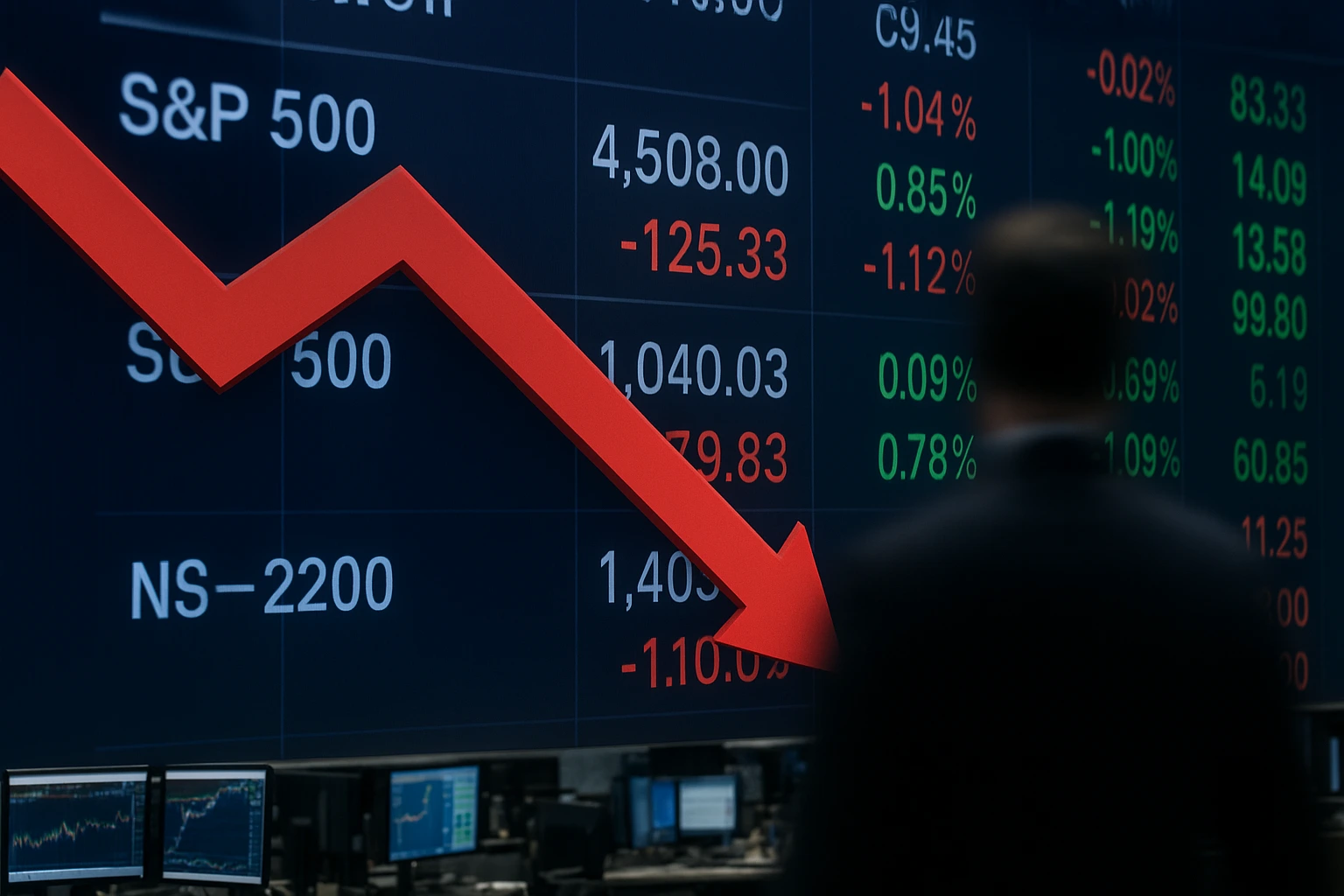NEW YORK — US stocks tumbled Friday after former President Donald Trump warned of “massive” new tariffs on Chinese imports, wiping out roughly $2 trillion in market value within hours and sending a shockwave through global markets.
The S&P 500, which had been near an all time high early in the session, fell 2.7% by the closing bell its steepest drop since April. The Nasdaq Composite sank 3.56%, while the Dow Jones Industrial Average lost 879 points, or 1.9%, marking its worst day since May.
Trump’s post on his Truth Social platform accused China of holding the world “captive” through its control of rare earth metals and suggested a “massive increase” in tariffs was under consideration.
The message, published shortly before 11 am Eastern time, sent investors scrambling to unload shares tied to global trade and technology supply chains.
The sell off underscored how financial markets remain highly sensitive to Trump’s rhetoric on trade and China, echoing the volatility seen during his previous administration.
Relations between Washington and Beijing had been showing tentative signs of improvement ahead of the Asia Pacific Economic Cooperation (APEC) summit later this month, where Trump and Chinese President Xi Jinping were expected to meet.
Analysts had largely assumed that ongoing trade negotiations would prevent major new tariff escalations. But Beijing’s latest move to tighten export controls on rare earth elements critical materials used in semiconductors, electric vehicles, and defense systems appeared to provoke Trump’s response.
China controls about 70% of global rare earth production, giving it leverage over industries central to US economic and national security interests.
“China’s new export restrictions on rare earths signal an assertive stance in global trade,” said Michael Han, a senior fellow at the Asia Economic Institute in Washington.
Trump’s reaction shows that trade tensions can escalate quickly, even without formal policy changes. Market strategists described Friday’s losses as a stark reminder of how fragile investor sentiment remains amid geopolitical uncertainty.
“The market was pricing in gradual progress on trade,” said Lisa Morton, chief economist at Harrington Capital. “Trump’s comments effectively shattered that narrative in one sentence. Investors fear we’re heading back to a tit for tat environment.”
Semiconductor and technology stocks led the decline. Nvidia fell 5%, while AMD dropped nearly 8%. Apple, which depends heavily on China for manufacturing, lost 3%. Tesla shares fell 5%, erasing nearly $50 billion in market capitalization.
“The message from investors is clear they don’t want to relive 2018,” said Daniel Krueger, a senior market analyst at Barclays. “A renewed trade war could weigh heavily on supply chains already strained by inflation and energy costs.”
According to Bespoke Investment Group, about $2 trillion in market capitalization vanished from US exchanges on Friday. The S&P 500’s 2.7% drop marked its sharpest one day decline in six months.
By comparison, a similar Trump-era trade scare in 2019 erased nearly $1.5 trillion over a week, as investors feared the breakdown of trade talks with Beijing.
The Nasdaq Composite, which hit an intraday record before Trump’s post, ended down 3.56% its biggest slide since early April. The Russell 2000 small cap index shed 3%, signaling broad concern across sectors.
In commodities, oil prices fell 2%, while gold rose 1.3% as investors sought safe haven assets. The US dollar briefly strengthened before retreating late in the session. On Wall Street, traders described the sell off as “instantaneous.”
“It was like a light switch,” said Greg Patel, a floor trader at the New York Stock Exchange. “You could literally see the algorithms kick in seconds after that post went live.”
Outside the financial world, manufacturers expressed anxiety over renewed tariff uncertainty. “If tariffs rise again, our costs go up overnight,” said Laura Jenkins, who runs a small auto parts factory in Michigan.
“We’re just starting to recover from the last trade cycle another round could crush small businesses like ours.” Technology workers in California also voiced concern about supply chain disruptions.
“Our semiconductor components rely on rare earths that come from China,” said Jay Chen, an engineer at a Silicon Valley hardware firm. “Even a rumor of restrictions can cause shipment delays or price spikes.”
Economists warned that another round of tariffs could test the resilience of the US economy, which has so far managed to withstand higher interest rates and global uncertainty.
“Trade tensions at this scale would likely push inflation back up and delay any hopes for rate cuts,” said Emily Brooks, a senior economist at Moody’s Analytics.
“The Fed would have to weigh the inflationary impact of tariffs against the deflationary pressure of a stock market downturn.”
China’s potential response is another major risk. Beijing could impose retaliatory duties on US goods or further restrict access to rare earths used in military and green technologies.
“The danger here is miscalculation,” said Han of the Asia Economic Institute. “Both sides have domestic audiences to satisfy, but neither can afford an all out trade war.”
Friday’s market plunge reflected more than just algorithmic trading it exposed the deep interconnection between politics, policy, and investor psychology.
As Trump continues to shape discourse ahead of the APEC summit, global investors remain on edge.
Whether his warning becomes policy or remains political posturing may determine not just the direction of US China relations, but the stability of the world’s largest economy.

